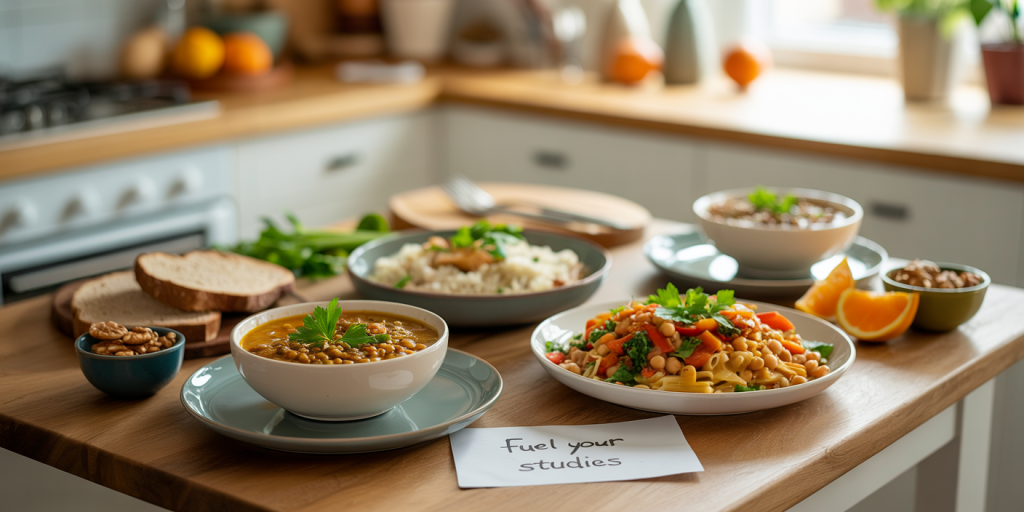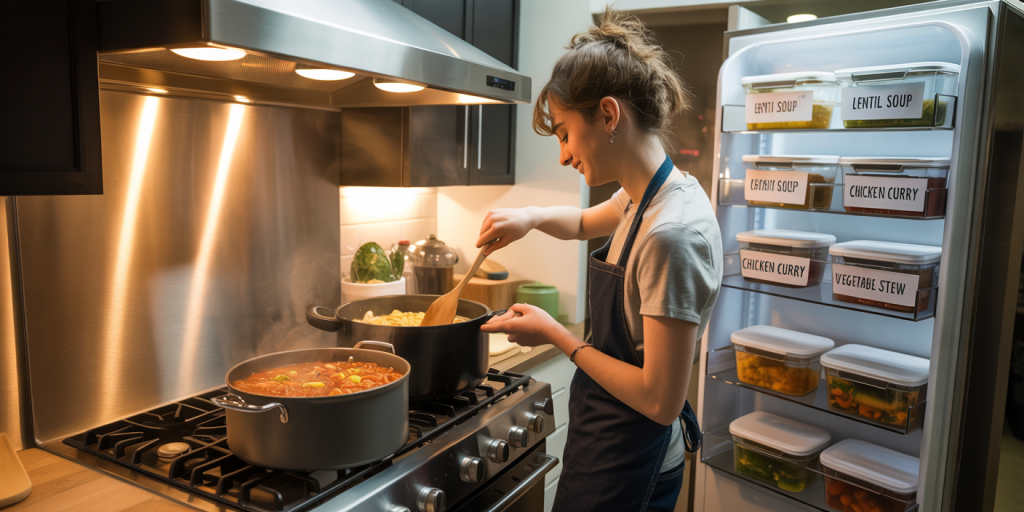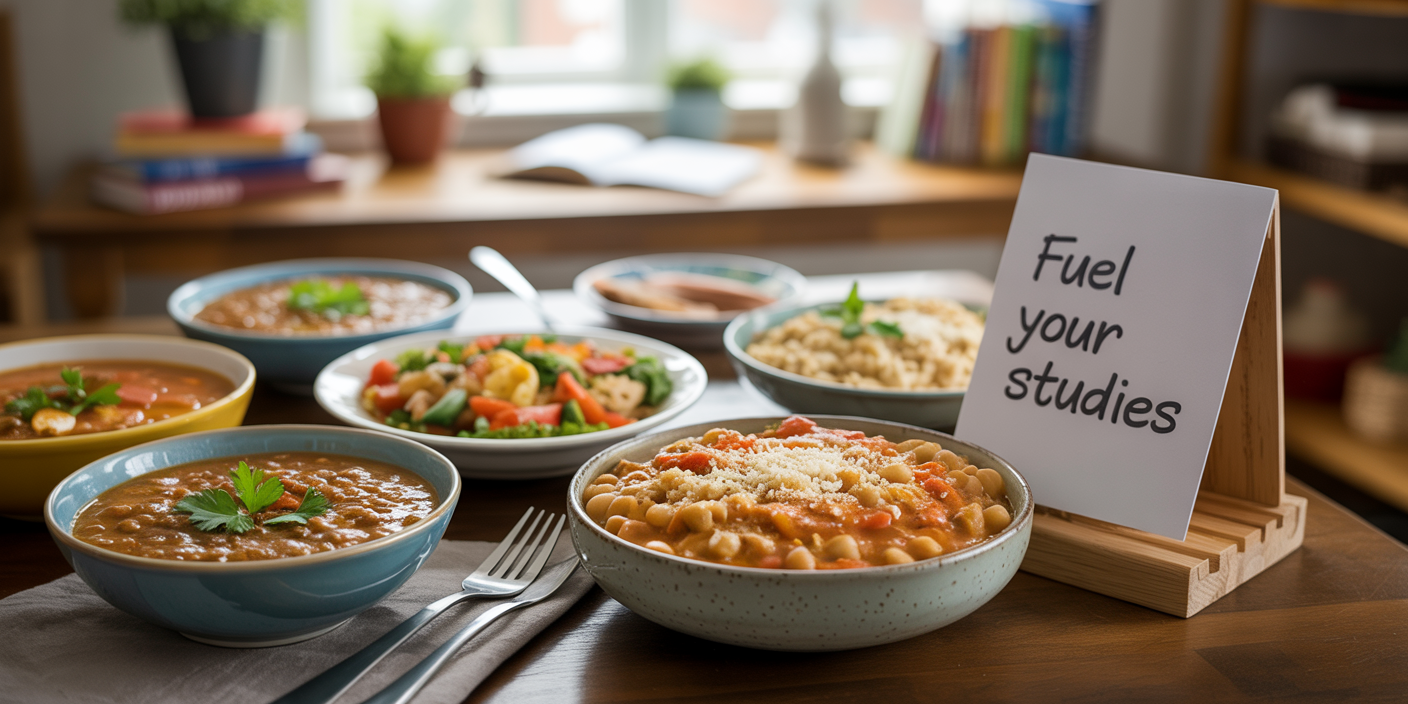Eating well on a student budget is a challenge shared by millions worldwide. According to the National Center for Education Statistics, over 19 million students were enrolled in U.S. colleges in 2023, many of whom face financial constraints that limit their food choices. Budget restrictions often lead students toward fast food, instant meals, or skipping meals altogether, which may affect their health and academic performance. However, with careful planning, savvy shopping, and cooking skills, nutritious and delicious meals can be prepared without breaking the bank.

Cooking on a tight budget requires more than just buying cheap ingredients; it involves understanding cost per serving, nutritional value, and time management. This article explores practical methods for affordable student cooking, offering real examples, budgeting tips, and a comparative analysis of popular budget-friendly foods.
Understanding the Basics of Budget Cooking
When cooking within budget limits, the first step is to understand where spending happens in the kitchen. Students typically allocate around $30 to $50 per week on groceries, according to a 2023 survey by Student Money Saver. This requires choosing ingredients that provide maximum value in terms of calories and nutrition per dollar spent. Pantry staples like rice, beans, pasta, and seasonal vegetables form the backbone of budget cooking since they offer versatility and long shelf lives.


Considering the nutritional quality is equally important. Cheap processed foods often contain unhealthy fats, excess salt, and empty calories. A study published in the Journal of Nutrition Education and Behavior (2022) shows that students who cook at home regularly are 24% more likely to meet daily vegetable intake recommendations. Therefore, balancing cost and nutrition while shopping is critical, as many staple items can be doubled up in meals such as stews, stir-fries, and salads.
Planning Meals: The Key to Savings and Healthier Eating
Meal planning is a simple yet powerful tool to reduce food waste and control expenses. Preparing a weekly menu allows students to buy only what they need and resist impulse purchases. For example, buying one large bag of rice and various vegetables can create meals like fried rice, vegetable curry, or stuffed peppers, demonstrating a multipurpose approach to ingredients.
Practical use of leftovers is another essential strategy. A study from the Environmental Protection Agency found that food waste accounts for about 30-40% of the food supply in the U.S., which is avoidable with better planning. Even a small container of cooked beans can be reheated for tacos, salads, or soups, stretching resources further.
To illustrate, a typical weekly meal plan might include:
| Day | Breakfast | Lunch | Dinner | Notes |
|---|---|---|---|---|
| Monday | Oatmeal with fruit | Chickpea salad | Lentil soup with bread | Bulk cooking lentil soup |
| Tuesday | Yogurt and nuts | Leftover lentil soup | Stir-fried rice and veg | Use leftover rice for stir-fry |
| Wednesday | Smoothie | Tuna sandwich | Pasta with tomato sauce | Simple, quick meals |
| Thursday | Toast and eggs | Veggie wrap | Bean chili | Freeze chili for future dinners |
| Friday | Cereal | Leftover chili | Homemade pizza | Use frozen chili as topping |
With a planned grocery list tailored to this menu, students can efficiently shop, saving both time and money.
Smart Shopping Tips for Students
Shopping smart is crucial for cooking economically. Buying in bulk is often cheaper, especially for dry goods like rice, lentils, and pasta. Warehouse clubs such as Costco or Sam’s Club provide discounts on bulk purchases, allowing students to stock up and reduce per-serving costs significantly. However, this makes sense only if storage and long-term usage are viable.
Seasonal and local produce also tends to be more affordable and fresher. For instance, purchasing winter squash or root vegetables in season during colder months can reduce costs by up to 50%, compared to out-of-season imports. Farmers markets may offer discounts especially near closing times when vendors clear stock.
Discount aisles at supermarkets provide additional opportunities, often featuring near-expiry products that can be frozen or used immediately. Apps like Too Good To Go and Flashfood help students find such deals in real time. According to a report from the Food and Agriculture Organization, 931 million tons of food were wasted globally in 2019, highlighting the potential of salvage shopping.
To compare prices of common staple items:
| Item | Average Cost (per lb) | Bulk Price (per lb) | Savings (%) |
|---|---|---|---|
| Brown Rice | $1.20 | $0.80 | 33% |
| Dried Lentils | $1.50 | $1.00 | 33% |
| Frozen Mixed Veg | $2.00 | $1.60 | 20% |
| Eggs (dozen) | $2.50 | N/A | N/A |
Cost savings, as shown in the table, become critical when weekly budgets are tight.
Essential Cooking Techniques for Budget Meals
Mastering a few basic cooking techniques enhances meal variety without requiring sophisticated equipment or expensive ingredients. One such method is batch cooking—preparing large quantities of meals that can be refrigerated or frozen for later use. For example, a large pot of chili or stew can feed a student for several days, reducing both cooking time and energy usage.
Learning how to cook pulses and grains properly unlocks inexpensive food sources. Soaking and slow-cooking beans not only saves money compared to canned versions but also improves digestibility and nutrient absorption. Stir-frying vegetables is another efficient method that maximizes flavor and retains nutrients without adding heavy oils.
Take the example of Sarah, a university student managing a $40 weekly food budget. By spending one Sunday afternoon preparing three different meals (lentil curry, vegetable pasta, and bean chili), she manages to eat nutritiously all week, avoiding costly takeaways and reducing stress around food choices.
Practical Examples of Budget-Friendly Recipes
Experimenting with recipes that use minimal, affordable ingredients can keep meals exciting and sustainable. Here are three practical recipes with estimated costs per serving:
1. Vegetable Stir-fry with Rice Ingredients: 1 cup rice ($0.20), mixed frozen vegetables 1 cup ($0.50), soy sauce, spices ($0.10) Cost per serving: Approx. $0.80 Nutritional value: High in fiber, vitamins, and carbohydrates.
2. Red Lentil Dahl Ingredients: 1 cup red lentils ($0.60), onion, garlic, canned tomatoes ($0.50), spices. Cost per serving: Approx. $0.70 Protein-rich and satisfying.
3. Pasta with Tomato and Chickpea Sauce Ingredients: 1 cup pasta ($0.30), canned chickpeas ($0.60), canned tomatoes ($0.50). Cost per serving: Approx. $0.75 Balanced meal with protein, carbs, and fiber.
These meals can be prepared within 30 minutes, making them ideal for busy students balancing studies and work.
Future Perspectives: Trends in Student Budget Cooking
As food prices fluctuate due to global economic factors—such as supply chain disruptions and inflation—students will continue to face constraints. However, innovations in food technology, sustainability, and educational resources promise improvements. Apps promoting zero-waste cooking and meal planning are increasingly popular among students, helping optimize ingredient use and minimize waste.
Urban agriculture initiatives like community gardens and hydroponic kits are gaining traction, enabling students to grow some of their own produce affordably. According to a 2024 report by the Sustainable Food Trust, urban farming can reduce food miles and increase access to fresh vegetables, an important factor for students in food deserts.
Additionally, educational institutions are incorporating cooking and nutrition workshops into orientation programs, empowering students with skills that contribute to long-term food independence. Government assistance programs designed for students—such as SNAP benefits in the U.S.—also help bridge gaps in food affordability and accessibility.
In summary, cooking on a student budget is more achievable today than before, combining traditional thriftiness with modern tools. By embracing mindful shopping, efficient meal planning, and practical cooking techniques, students can maintain a balanced diet that supports their academic success and well-being. Continued innovation and support systems will further enhance these opportunities, ensuring that food insecurity among students becomes a relic of the past.

Deixe um comentário